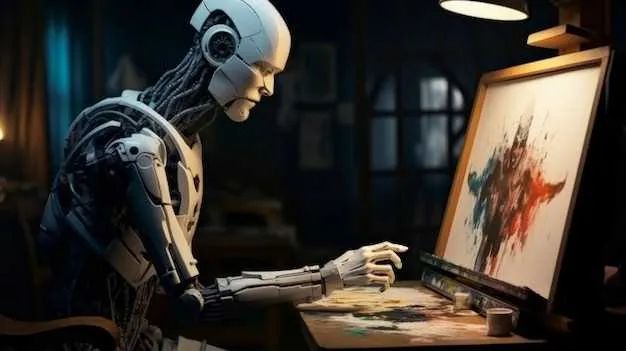In recent years, the intersection of artificial intelligence (AI) and digital art has led to groundbreaking developments and has had a significant impact on shaping contemporary art trends. AI technology has revolutionized the way artists create, collaborate, and distribute their work, leading to a new era of creativity and innovation in the art world.
AI-Generated Art
One of the most prominent ways AI is shaping digital art trends is through the creation of AI-generated art. Artists and technologists are using machine learning algorithms to generate unique and original pieces of art that push the boundaries of traditional art forms. These AI-generated artworks are often a fusion of human creativity and machine intelligence, resulting in pieces that are both innovative and thought-provoking.
Enhancing Creativity
AI tools and technologies are also being used to enhance creativity and streamline the creative process for artists. From AI-powered design tools to virtual reality platforms, artists now have access to a wide range of tools that can help them experiment with new techniques, styles, and mediums. By using AI, artists can explore new creative possibilities and push the limits of their imagination to create truly unique and original artworks.
Personalization and Customization
AI has also played a significant role in personalizing and customizing digital art experiences for viewers. By analyzing user data and preferences, AI algorithms can curate personalized art recommendations and experiences that cater to individual tastes and interests. This level of customization allows artists to connect with their audience on a more personal level and create meaningful and engaging experiences that resonate with viewers.
Collaboration and Community
Another key aspect of the role of AI in shaping digital art trends is its ability to facilitate collaboration and community-building among artists. AI-powered platforms and tools enable artists to connect, share, and collaborate on projects in real-time, regardless of their physical location. This level of connectivity and collaboration has led to the emergence of vibrant online art communities that foster creativity, innovation, and inspiration among artists worldwide.
Challenges and Ethical Considerations
While AI has revolutionized the art world in many ways, it also poses certain challenges and ethical considerations that need to be addressed. Questions around authorship, ownership, and the role of AI in the creative process are important issues that need to be discussed and considered as AI continues to shape digital art trends. Additionally, concerns about bias, privacy, and data security in AI-generated art are also important considerations that artists and technologists must navigate as they continue to explore the possibilities of AI in the art world.
In conclusion, AI is playing a transformative role in shaping digital art trends and pushing the boundaries of creativity and innovation in the art world. From AI-generated art to personalized experiences and collaborative platforms, AI is revolutionizing the way artists create, share, and experience art. As artists continue to explore the possibilities of AI, it is important to consider the ethical implications and challenges that come with integrating AI technology into the creative process. By embracing technology and innovation, artists can harness the power of AI to create truly groundbreaking and impactful works of art that inspire and captivate audiences worldwide.
